Strongarch Academic Services
Education – Research – Consultancy
Applying traditional academic values to:
– Continuing professional education for health practitioners, biomedical engineers and scientists
– Independent systematic and numeric analysis, reports and advice for institutions, business, the community and media
– Research to expand knowledge
Strongarch Research Initiatives
There is an active research program exploring underlying mechanisms of disease, tissue remodelling and also dental robotics.
Both academic and commercial collaborators are welcome and should contact Strongarch at [email protected].
Cell-Projection Pumping – A Potential New Anti-Cancer Target
Cancer cells need normal cells like fibroblasts for support. We showed some years ago, that fibroblasts and cancer cells exchange quite large volumes of their cytoplasm.
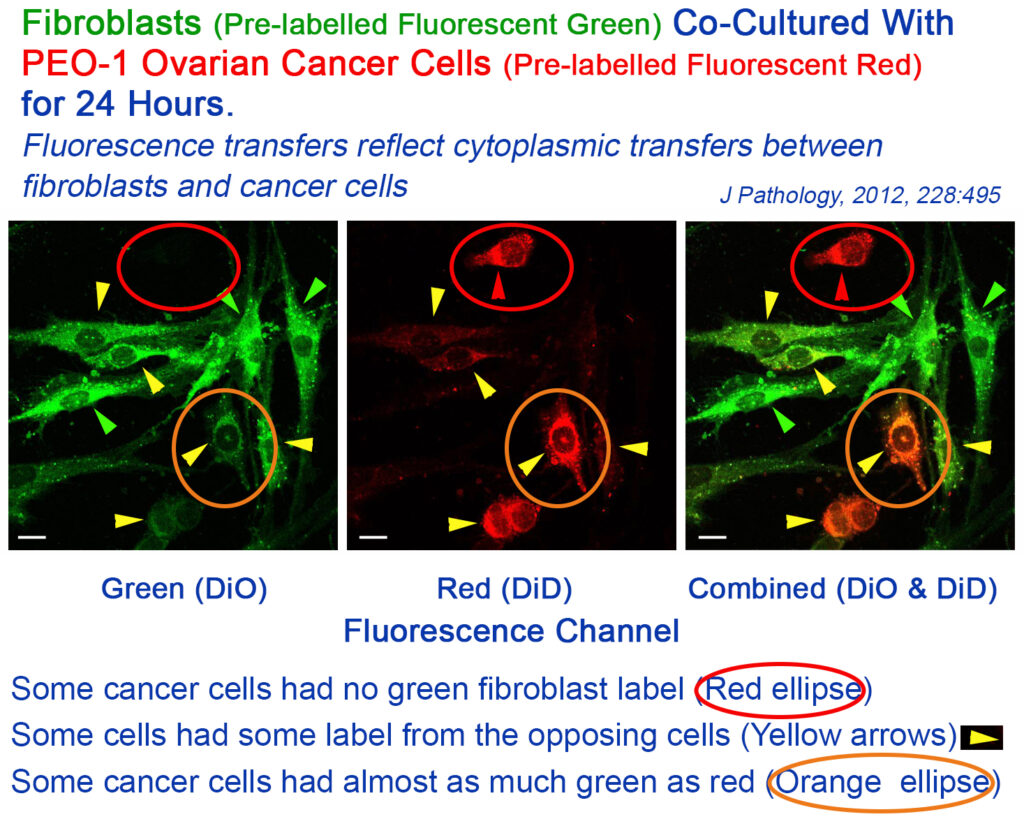
Exosomes or other shed membrane vesicles could not account for transfers from fibroblasts to cancer cells, because they would have snowed more evenly to create a more uniform spread of fluorescence and there wouldn’t be any cancer cells without fibroblast fluorescence (Red ellipse).
Tunnelling nanotubes could not account for transfers, because the amount of fibroblast transfer to some cells was so great (Orange ellipse). We latter showed transfer was by a previously unknown mechanism in which the brief increases in hydrostatic pressure that occur when fibroblast cell projections retract, occasionally force fibroblast cytoplasm into cancer cells via transient micro-fusions instead of driving the cytoplasm back into the fibroblast cell body. We called this ‘cell-projection pumping’, because cytoplasm is quite literally pumped out of cell projections into neighboring cells.
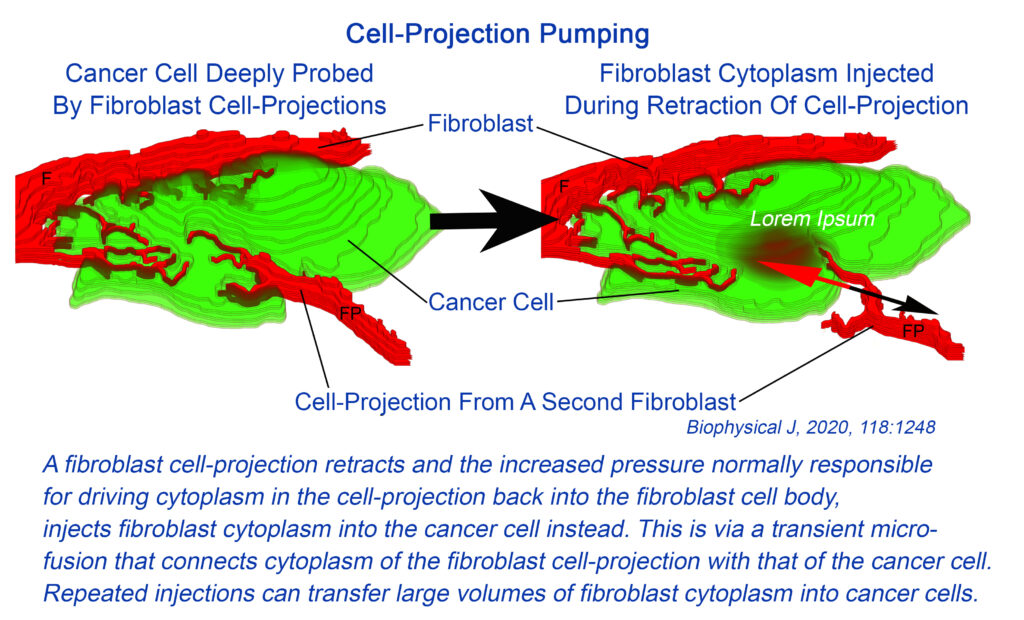
Cell-projection pumping dramatically changes cancer cells to: migrate more quickly, relevant to cancer spread; divide more quickly, relevant to cancer growth; and become more varied in cell shape and size, relevant to cancer diagnosis (PLoS ONE 2019, 14(11):e0224800; Biomolecules 2021, 11, 1875; Int J Molecular Sciences, 2022, 23:7949).
Preliminary data suggests cell-projection pumping also increases resistance of cancer cells to chemotherapy. From the above, we think that blocking cell-projection pumping could improve cancer outcomes, so that cell-projection pumping is a new potential anti-cancer target.
Subtle Biomaterials Toxicity of Orthodontic Brackets Detected by Single Cell Tracking
There is increasing concern that environmental toxicants and biomaterials could have subtle toxic effects that are not easily detected by routine cell assays. We have applied the recently developed method of single cell tracking to establish a highly sensitive new method for detecting subtle cytotoxic effects, and use this to show that cell culture medium incubated with orthodontic brackets has subtle cytotoxicity for fibroblasts.
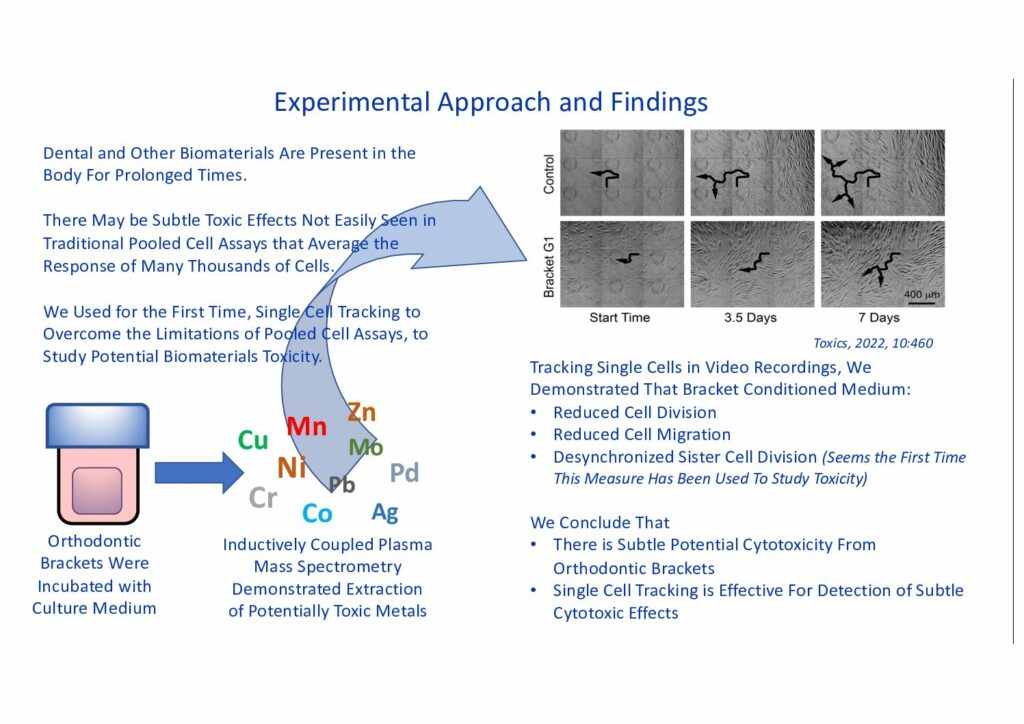
Educational Research Showing the Power of In-Class Computer Simulation to Demonstrate Frequent Career-Long Exposure of Clinicians to Rare Diseases and Increase Student Interest
Because there are so many rare diseases up to 6% of the population may be affected. Pressures on curriculum time and the sense of both students and academics that rare conditions are only seen rarely, skews clinical education away from the community need for graduates to have reasonable familiarity with and suspicion for rare diseases.
We developed a computer simulation of the career exposure to patients with rare diseases.
The simulation demonstrated that all clinicians frequently encounter patients who have separate rare conditions. In-class demonstration of the computer simulation increased student perception of the importance of learning about rare diseases.
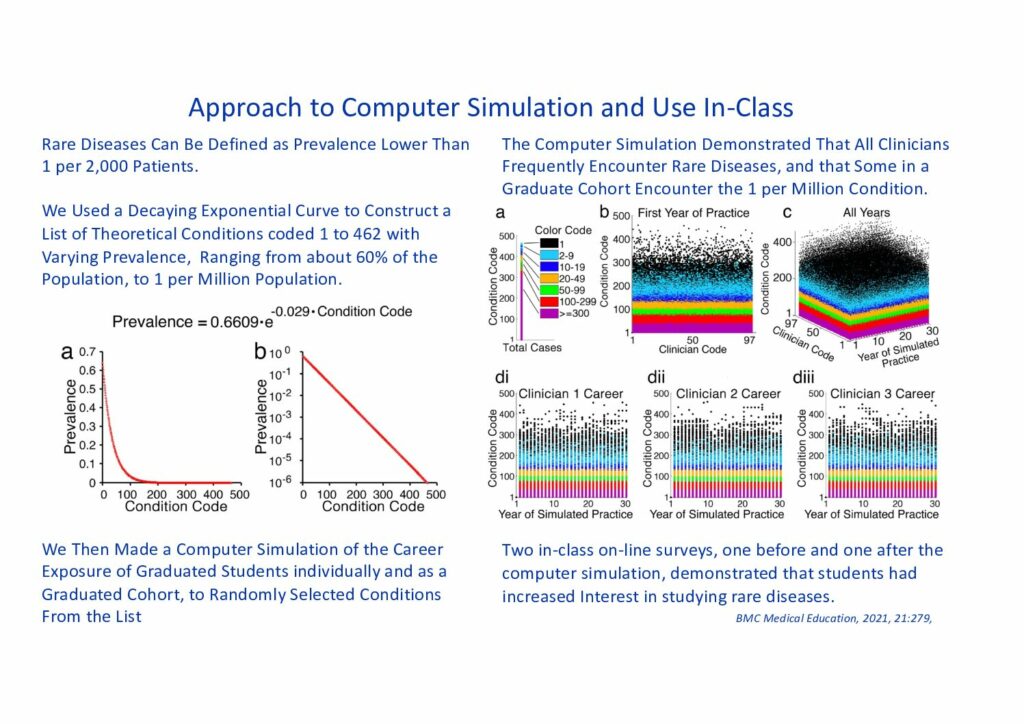
Improved Explanations for Tooth Eruption, Cyst Expansion and Cyst Cortication
Traditional explanations for tooth eruption have lacked convincing mechanisms and experimental support. Using finite element analysis, we demonstrated that patterns of compression and tension generated by normal bite forces in soft tissues surrounding unerupted teeth, could account for bone resorption above the teeth together with bone deposition below them, and that this would result in tooth eruption.
We then applied the same finite element analysis method to the study of cysts in bone, and demonstrated that similar effects of functional compression in the cyst capsule could account for cyst expansion, and that bone strain also accounted for the thickening of bone adjacent to cysts, described radiographically as ‘cortication’. Applications include improved orthodontic and clinical predictions, personalized surgical interventions to manage tooth impaction, and personalized implant design for improved outcomes.
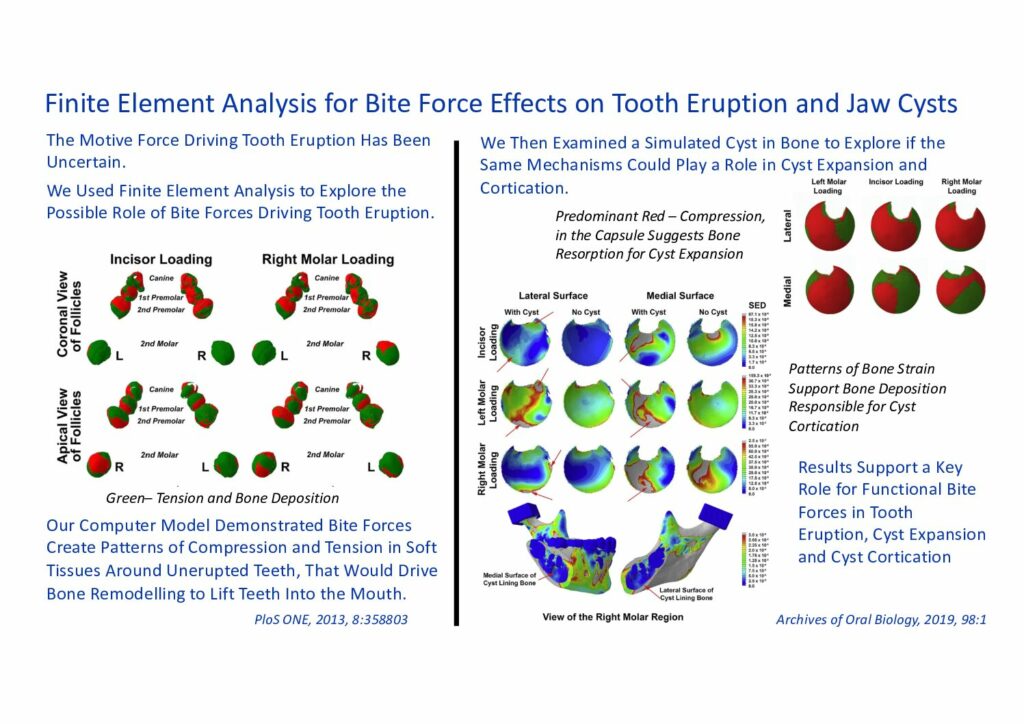
Our paper on cyst expansion and cortication is not available via Open Access, but can be obtained from most academic libraries (Archives of Oral Biology, 2019, 98:1)
Dental Robotics
Prof Zoellner heads a small team of engineers and dental clinicians exploring the potential of dental robotics. Work is at an early stage and publications will be made available as we progress.
